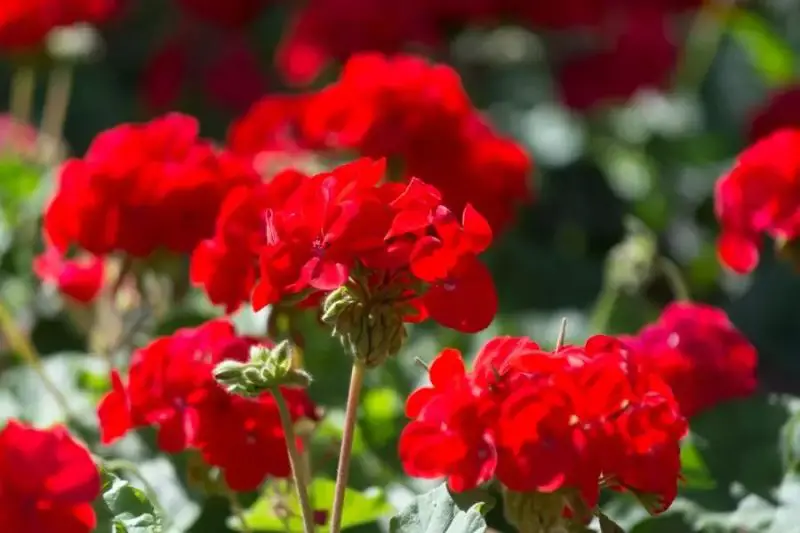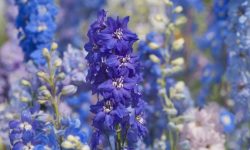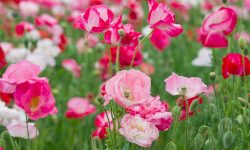Geraniums are well-loved for their vibrant clusters of flowers, rich green leaves, and easy-to-grow nature, making them a popular choice in gardens, containers, and hanging baskets. However, sometimes these hardy plants produce healthy foliage but disappointingly few or no flowers. If you are wondering why your geraniums are not blooming this season, you are not alone. Many gardeners face this issue, which can be caused by several growing conditions and care mistakes.
Understanding what geraniums need to thrive and bloom will help you bring them back to their colorful, flower-filled state. This guide explains the most common reasons for poor blooming and offers expert tips to encourage your geraniums to produce abundant flowers once again.
Understanding Geranium Blooming Cycles

Geraniums have specific growing and blooming patterns that are influenced by seasonal changes. Most common garden geraniums, also known as zonal geraniums, bloom continuously from spring through fall if given proper care. Ivy geraniums also flower throughout the warm months, though they prefer cooler conditions and may stop blooming in extreme summer heat.
The blooming cycle of geraniums depends heavily on healthy vegetative growth followed by bud formation. If the plant’s energy is directed toward producing leaves and stems rather than flower buds, you will see lush foliage but very few blooms. Because geraniums thrive on consistent light, balanced nutrition, and correct pruning, any disturbance in these factors can disrupt their blooming schedule.
Understanding this natural cycle is important because it explains why sudden environmental changes or incorrect care practices can cause your geraniums to stop flowering, even if they appeared healthy earlier in the season.
Improper Pruning and Its Impact on Blooms
Pruning plays a critical role in encouraging new flowers, but when done incorrectly, it can have the opposite effect. Cutting back geraniums at the wrong time of year or removing too many stems can significantly reduce blooming. Geraniums bloom on new growth, so light pinching and pruning are essential to stimulate branching and encourage more flower clusters.
If you have been pruning heavily late in the growing season, you might have accidentally removed developing flower buds. The best time to prune geraniums is early in the season, before they begin producing buds, or immediately after a flush of blooms has faded. Deadheading, or removing spent flowers, is another crucial step because it prevents the plant from putting energy into seed production and instead redirects it toward creating new buds.
When pruning, focus on removing leggy, weak stems and old flower heads while leaving strong, healthy growth intact. Proper pruning throughout the growing season keeps geraniums compact, bushy, and full of vibrant blooms.
Excessive Nitrogen and Fertilizer Imbalance
One of the leading reasons geraniums stop blooming is over-fertilization, especially with high-nitrogen fertilizers. Nitrogen is essential for leaf growth, but too much of it encourages lush, green foliage at the expense of flowers. If you have been feeding your geraniums with a fertilizer designed for lawns or general plant growth, this could explain the lack of blooms.
Geraniums need a balanced fertilizer with a slightly higher phosphorus content to stimulate flower production. Phosphorus supports bud formation and root development, making it essential for consistent blooming. Switching to a fertilizer labeled for flowering plants or specifically for geraniums can make a noticeable difference.
Feeding should also follow the plant’s natural growth cycle. Applying fertilizer every two to four weeks during the active growing season is usually sufficient. Over-fertilizing or feeding too late in the season can cause excessive leafy growth and delay flowering. Maintaining the correct nutrient balance is key to healthy blooms.
Insufficient Sunlight and Its Effect on Bud Formation
Geraniums are sun-loving plants that require at least six hours of direct sunlight daily to produce abundant flowers. If your geraniums are growing in deep shade, under trees, or in a location that receives only filtered light, they may focus on growing leaves rather than forming flower buds.
Moving your geraniums to a sunnier location can quickly improve their flowering performance. For potted or hanging basket geraniums, placing them in full sun or near a bright south-facing window is ideal. In very hot climates, providing morning sun and light afternoon shade can prevent stress and leaf scorching, while still giving enough light for strong blooming.
Sunlight directly affects the plant’s energy production through photosynthesis, which in turn influences its ability to create flower buds. Geraniums deprived of sunlight will naturally produce fewer or no flowers, even if other growing conditions are ideal.
Improper Watering and Moisture Stress
Watering mistakes are another common cause of poor blooming. Both overwatering and underwatering can stress geraniums and prevent them from flowering properly. These plants prefer well-drained soil that is kept evenly moist but not soggy. Waterlogged soil suffocates the roots, while dry soil can cause buds to shrivel and drop before opening.
Checking the soil regularly is the best way to ensure proper watering. Water deeply when the top inch of soil feels dry, and allow excess water to drain completely. Geraniums grown in pots should never sit in saucers filled with water, as this encourages root rot and nutrient deficiencies that hinder flowering.
During hot summer months, consistent watering is crucial, especially for container-grown geraniums, which dry out faster than those planted in the ground. However, watering too frequently can lead to weak, leggy growth and fewer blooms. Finding the right balance will keep the plant healthy and encourage continuous flower production.
Temperature Fluctuations and Heat Stress
Geraniums prefer moderate temperatures and may stop blooming if exposed to extreme heat or cold. Most varieties thrive in temperatures between 60°F and 75°F during the day and slightly cooler nights. Prolonged heat waves, especially above 85°F, can cause bud drop and delayed flowering, while cold snaps can damage tender buds and young growth.
If your geraniums are experiencing heat stress, moving potted plants to a slightly shadier area during the hottest part of the day can help. For garden-grown plants, adding mulch around the base can keep roots cool and moist. In cooler climates, bringing potted geraniums indoors during unexpected cold spells can protect them from frost damage that might destroy developing buds.
Providing a stable growing environment with consistent temperatures will allow geraniums to maintain healthy growth and continuous blooming throughout the season.
Soil Quality and Root Health
Healthy roots are essential for strong flowering, and poor soil conditions can directly affect bloom production. Geraniums thrive in well-draining soil enriched with organic matter. Compacted or heavy clay soil restricts root growth, leading to weak plants and fewer flowers.
If your geraniums are planted in containers, ensure they are in pots with good drainage holes and high-quality potting soil. Adding perlite or coarse sand can improve drainage and prevent waterlogging. Garden soil can be improved by mixing compost or organic matter before planting.
Healthy roots are better at absorbing nutrients and water, which directly impacts the plant’s ability to produce flower buds. If your geraniums have been in the same pot or soil for a long time, repotting with fresh soil may stimulate new growth and encourage flowering.
Pest and Disease Issues Affecting Flowering
Pests such as aphids, whiteflies, and spider mites can damage leaves and flower buds, reducing the plant’s ability to bloom. Fungal diseases like botrytis blight can infect flower buds, causing them to rot or fall off before opening.
Inspecting your geraniums regularly is crucial to catching problems early. Washing leaves with a gentle stream of water or using insecticidal soap can control mild pest infestations. Removing infected flowers and improving air circulation around the plants can help prevent fungal issues. Healthy, pest-free plants are far more likely to produce abundant flowers.
Encouraging Geraniums to Bloom Again
Bringing geraniums back to full bloom requires a combination of proper pruning, correct feeding, adequate sunlight, and consistent watering. Adjusting these care practices will gradually restore the plant’s energy and stimulate bud formation. Deadheading spent blooms, maintaining moderate temperatures, and ensuring good soil quality will also contribute to healthier, more vigorous plants.
Patience is key, as geraniums may take several weeks to respond to improved care. By correcting the underlying issues and providing the ideal growing environment, you can look forward to a season filled with bright, colorful flowers.
FAQs About Geraniums Not Blooming
How long does it take for geraniums to bloom after correcting care?
Once proper care is restored, geraniums typically take two to four weeks to produce new flower buds, depending on their growth stage.
Should I cut back geraniums that are not blooming?
Yes, light pruning and deadheading encourage new growth and stimulate flowering, but avoid heavy pruning during the peak blooming season.
What is the best fertilizer for geranium blooms?
Use a balanced fertilizer with a higher phosphorus ratio, such as 10-20-10, to encourage strong flowering.
Can geraniums bloom indoors?
Yes, if placed in a bright, sunny location and given proper care, potted geraniums can continue blooming indoors.
Why do my geraniums have healthy leaves but no flowers?
This is usually caused by too much nitrogen, insufficient sunlight, or improper pruning, which encourages foliage growth rather than flowering.






